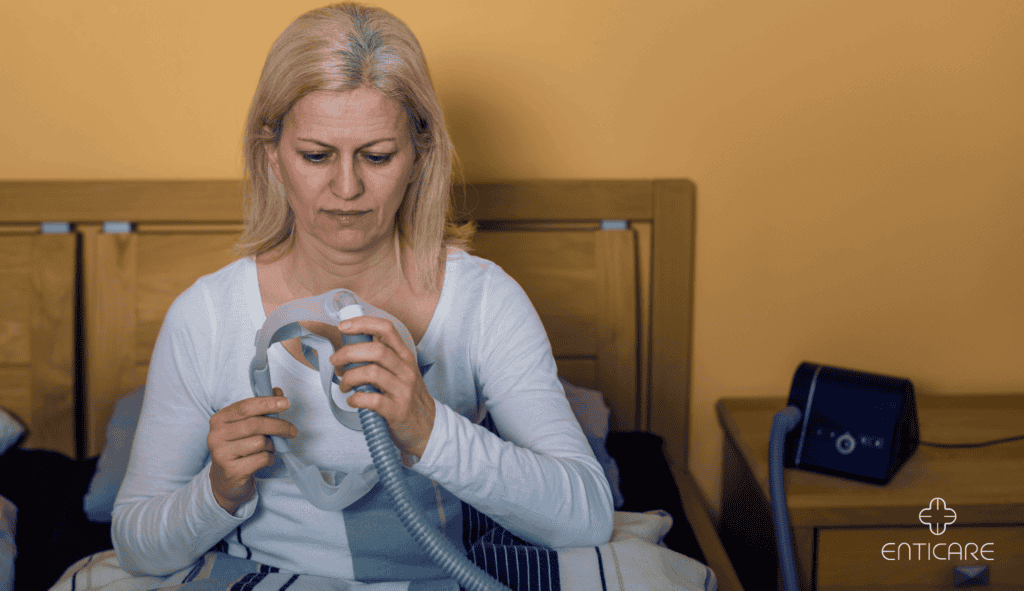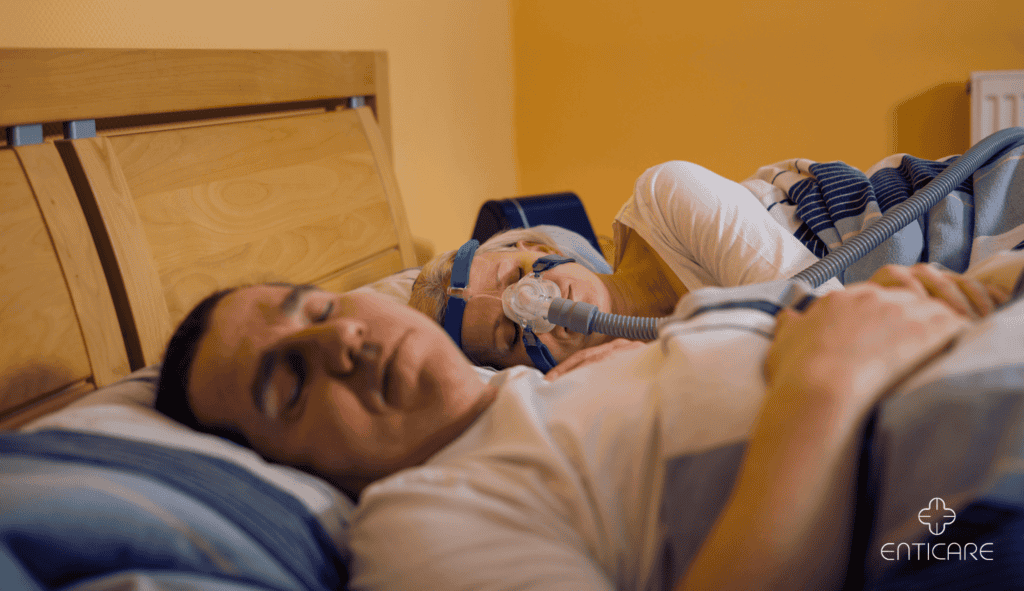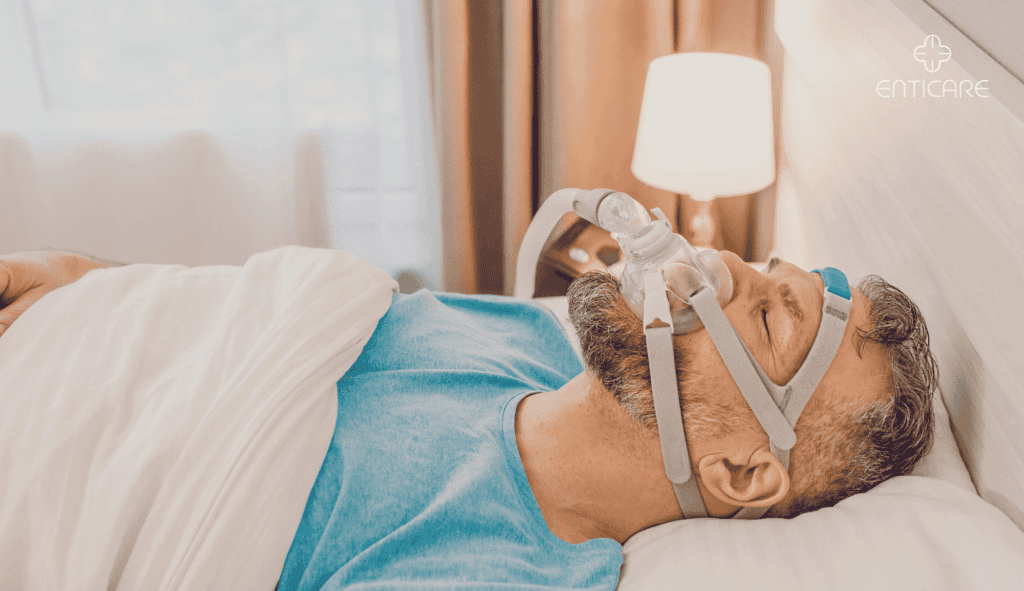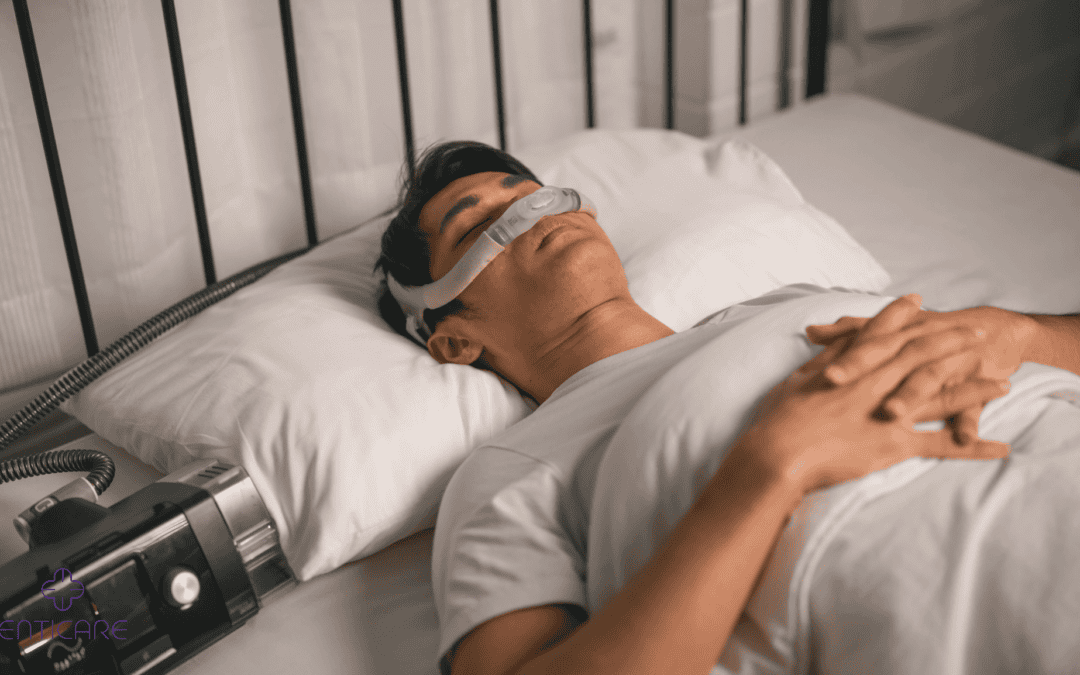Wondering if you can use your BiPAP machine as a CPAP, or vice versa? Understanding the distinctions between these two sleep apnea therapy devices, BiPAP vs CPAP, is crucial.
Living with sleep apnea requires reliable equipment to ensure restful nights. Both BiPAP and CPAP machines are lifesavers, but their functionalities can seem confusing. This blog cuts through the confusion and explores the key differences between BiPAP and CPAP machines. We’ll answer the burning question: can you switch between the two modes, and if so, under what circumstances?
BiPAP and CPAP machines offer effective solutions for sleep apnea, but they work in slightly different ways.

Understanding BiPAP vs. CPAP
-
- CPAP (Continuous Positive Airway Pressure): A CPAP machine delivers a constant and fixed level of positive air pressure through a mask to keep your airway open during sleep. It’s suitable for individuals with mild to moderate sleep apnea where a single pressure setting is sufficient.
- BiPAP (Bi-Level Positive Airway Pressure): A BiPAP machine delivers two different levels of positive air pressure – a higher pressure when you inhale (inspiratory pressure – IPAP) and a lower pressure when you exhale (expiratory pressure – EPAP). This variation in pressure can be beneficial for individuals with more severe sleep apnea or those who struggle to exhale against a constant CPAP pressure.
Key Differences
| Feature | CPAP | BiPAP |
| Pressure Delivery | Single, fixed pressure | Two separate pressures – higher for inhalation, lower for exhalation |
| Suitability | Mild to moderate sleep apnea | Moderate to severe sleep apnea |
| Breathing Assistance | Provides constant support against airway collapse | Offers more customized support for inhalation and exhalation |

Can You Switch Between BiPAP and CPAP Modes?
In most cases, you cannot switch between CPAP and BiPAP modes on the same CPAP or APAP machine. However, BiPAP devices can be set to CPAP mode rather easily.
What is “AutoPAP”:
- Auto CPAP, aka APAP: Some advanced CPAP machines have an “auto-adjust” feature that can automatically adjust the pressure within a pre-set range based on your breathing needs during sleep. In most cases, these devices cannot be set to BiPAP mode either.
Never attempt to modify your CPAP or BiPAP machine settings on your own. Always consult with your doctor or sleep therapist to determine the optimal pressure settings and device type for your specific sleep apnea condition.
When Might Switching from BiPAP to CPAP Be Considered?
In some cases, your doctor might consider transitioning you from BiPAP to CPAP therapy:
- Improved Sleep Apnea Severity: If your sleep apnea symptoms improve significantly with successful treatment, your doctor might explore if a CPAP machine, with its simpler and more comfortable design, can effectively maintain your airway open during sleep.
- Adaptability Issues: While BiPAP offers more tailored pressure settings, some users might find the constant pressure switching during each breath cycle disruptive to their sleep. In such cases, your doctor might explore if a CPAP, with its constant pressure delivery, can be equally effective.

Why Consulting Your Doctor is Crucial
Regardless of whether you’re using a BiPAP or CPAP machine, your doctor plays a vital role in your sleep apnea treatment journey.
- Diagnosis and Treatment Plan: Your doctor diagnoses your sleep apnea severity and prescribes the appropriate therapy, including the type of machine and pressure settings.
- Monitoring and Adjustments: Your doctor monitors your progress through regular follow-up appointments and may adjust your pressure settings or consider switching from BiPAP to CPAP (if appropriate) based on your individual needs.
Understanding the differences between BiPAP and CPAP machines empowers you to participate actively in your sleep apnea treatment. While switching between modes on the same machine is usually not possible, your doctor can explore transitioning you from BiPAP to CPAP therapy if your sleep apnea severity improves or you experience discomfort with the BiPAP settings. And if you have any questions, don’t hesitate to contact Enticare, our expert team is here to assist you every step of the way.

